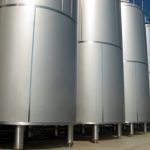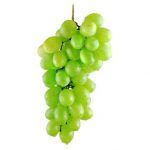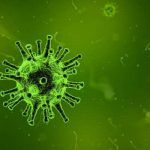Climate disaster plagues the minds of many. With between 4.8 and 12.7 million tonnes of plastic entering the ocean each year, plastic pollution is at the forefront of the issue.
You only have to see pictures of beaches in the Philippines or hear stories of the microplastic problem to understand that we need to change – and fast. Here are 7 ways that we all can reduce our plastics footprint and help save the Earth.
1. Chewing Gum
Many people are unaware that most chewing gum contains plastic. Changing from tree sap to polymers, the average person chews over 300 sticks of gum per year to keep our breath fresh and our teeth strong.
It hangs around in the environment for a long time once it leaves our mouths. Supermarket giant Iceland surveyed 2000 people and found that 85% didn’t know that gum had plastic in it. Iceland is the first major supermarket to sell plastic-free gum: join them and make sure what you chew isn’t chewed by the Earth for decades more.
2. Coffee
Preparing for school, work, or play is incomplete without a coffee to boost you. But did you know that 2.5 billion coffee cups are thrown away every year in the UK?
Coffee cups mostly combine cardboard with a plastic coating inside that makes it tough to recycle. It’s time to buy a reusable cup and bring it wherever you go. This will do a great deal reduce your footprint.
3. Wet Wipes
Wet wipes are a genuine menace that most everyone uses. Not only do they contain plastics, but they also cause other environmental problems, such as sewer fatbergs. In the UK, wet wipes made up 93% of material causing sewer blockages.
The Welsh Government is taking steps to respond to scientific recommendations and are considering banning non-biodegradable wet wipes. Alternatives to wet wipes aren’t complex. Wet towels and tissue could be used to similar effect. If they aren’t biodegradable, don’t buy them – and certainly don’t flush them!
4. Glitter
It may look beautiful but glitter contains plastic. On the faces of many at parades or the dresses of many in clubs, fashion takes a toll. Glitter is easy to avoid but some people go further calling for a ban.
Recognised by the Government, the scourge of microplastics like glitter is being slowly dealt with. First steps have been taken but it is up to us to cut this sparkly item out of our life and start being a little bit less glittery!
5. Tea Bags
Up there alongside coffee, this may upset many people. Most UK tea bags contain plastic, usually found in their sealing methods. Here is a list of companies that do and don’t – have your say with your spending power.
Switching to loose-leaf tea and other bagless items would help enormously. Just make sure whatever they come in is not wrapped in plastic. Many recipes for homemade tea can be found online.
6. Tins and Cans
Food tins and cans can contain a plastic lining inside. When you eliminate cans and bottles from your house, there’s not much left – and glass, although good, can be tough to store (plus hardly any shop is equipped to help you reuse glass).
Kicking the can might be both tough and expensive, but it is a way to reduce your footprint. Finding cans that aren’t wrapped in it is also a great initiative.
7. Toothbrushes
With a billion toothbrushes predicted to be thrown away in 2019 in the US, this key hygiene product is causing a problem. Many people won’t have even thought of it as plastic, but it is.
New models such as the bamboo toothbrush are coming into the frame that allow for recyclable and biodegradable products instead of the long-living plastic stick.
Conclusions
The main action to stop plastic pollution is to stop using plastics.
Whilst they are usually unavoidable to the untrained eye, many articles like this exist online to show people that there are ways to spot them. Changing our habits is fairly easy too.
This Himalayan village in India banned single use plastics (video).
More information
WRAP (Waste and Resources Action Programme) was set up in 2000 to promote sustainable waste management.
Here is an excellent guide to various types of plastics and what can be done with them at end of life.
References:
BBC video (Oct 2019). The Himalayan village that confiscates single-use plastics. https://www.bbc.co.uk/news/av/science-environment-49897261/the-himalayan-village-that-confiscates-single-use-plastics
Borunda, A. (Jun 2019). How your toothbrush became part of the plastic crisis. National Geographic. Retrieved from https://www.nationalgeographic.com/environment/2019/06/story-of-plastic-toothbrushes/
Casson, L. (Mar 2017). Wake up and smell the coffee! Greenpeace. Retrieved from https://storage.googleapis.com/gpuk-old-wp-site/wake-up-and-smell-the-coffee/index.html?source=wb&subsource=20170310ocwb01
Chewing Gum Facts. Chewing Gum Facts. Retrieved from http://www.chewinggumfacts.com/
Dockrill, P. (May 2019). Viral Video Reveals The Bizarre Way You Can Make a Soda Can Fully Transparent. Science Alert. Retrieved from https://www.sciencealert.com/viral-video-reveals-the-bizarre-way-you-can-make-a-soda-can-fully-transparent
Gabbatiss, J. (Nov 2017). Glitter should be banned over environmental impact, scientists warn. The Independent. Retrieved from https://www.independent.co.uk/environment/glitter-ban-environment-microbead-impact-microplastics-scientists-warning-deep-ocean-a8056196.html
Graham, W. (Apr 2019). Is There Plastic In Your Tea? Moral Fibres. Retrieved from http://moralfibres.co.uk/is-there-plastic-in-your-tea/
Greenpeace. (Aug 2017). 9 ways to reduce your plastic use. Retrieved from https://www.greenpeace.org.uk/news/9-ways-reduce-plastic-use/
Lindsay, J. (Aug 2018). Did you know that most chewing gum contains plastic? Metro. Retrieved from https://metro.co.uk/2018/08/02/know-chewing-gum-contains-plastic-7790722/
Messenger, S. (Jun 2019). Plastic wet wipes: Call for ban over sewer blockages. The BBC. Retrieved from https://www.bbc.co.uk/news/uk-wales-48547038
Natural History Museum. How much plastic is in the ocean? Retrieved from https://www.nhm.ac.uk/discover/quick-questions/how-much-plastic-is-in-the-ocean.html
Pajda, A. (May 2018). Did You Know Wet Wipes Are Made With Plastic? This Is Why the UK Wants Them Banned. One Green Planet. Retrieved from https://www.onegreenplanet.org/news/wet-wipes-made-plastic-uk-wants-banned/
Parker, L. (Jun 2019). The world’s plastic pollution crisis explained. National Geographic. Retrieved from https://www.nationalgeographic.com/environment/habitats/plastic-pollution/
Pritchard, E. (Jul 2019). Plastic-Free tea bags: Which brands are and aren’t? Country Living. Retrieved from https://www.countryliving.com/uk/create/food-and-drink/news/a3291/plastic-tea-bags-environment/
The Public Purse. (Jun 2019). The Tiny Killers Haunting Your Body. Retrieved from https://www.thepublicpurse.org.uk/general/the-tiny-killers-haunting-your-body/
Water UK. (Dec 2017). New proof that flushing wipes is a major cause of sewer blockages. Retrieved from https://www.water.org.uk/news-item/new-proof-that-flushing-wipes-is-a-major-cause-of-sewer-blockages/
WRAP. Understanding plastic packaging and the language we use to describe it. Retrieved from http://www.wrap.org.uk/sites/files/wrap/Understanding%20plastic%20packaging%20FINAL.pdf










